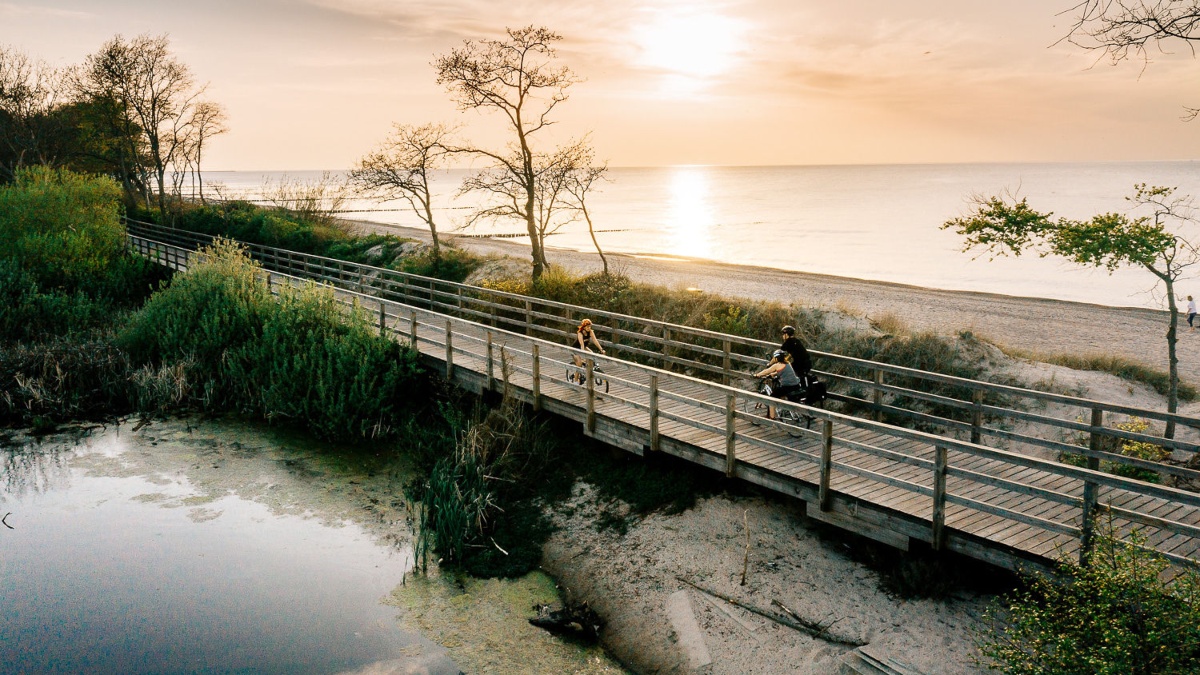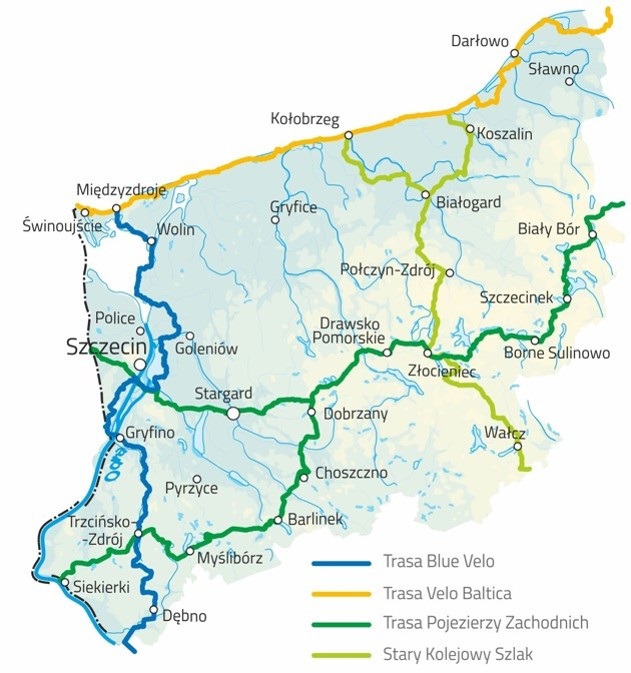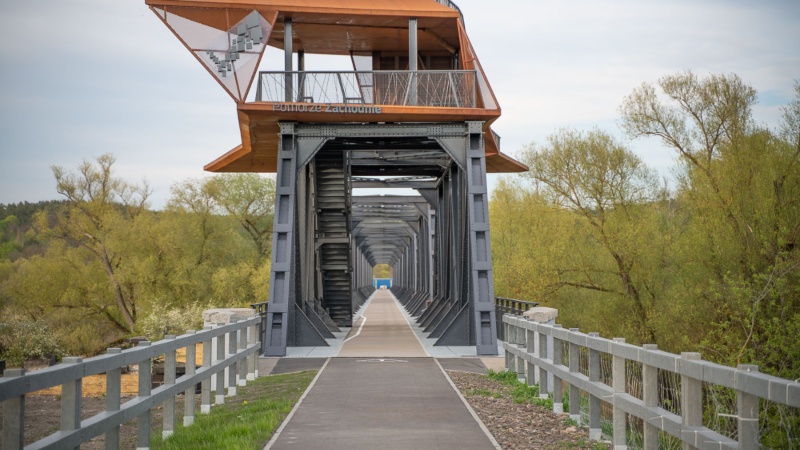
Lessons learned: Building a regional cycling network in Poland’s West Pomerania region
In only five years, the region of West Pomerania in Poland has created the backbone of an entire regional cycling network, with 800km of high-quality cycle routes – including 350km of new cycle tracks – already either opened or under construction.
How do you create a regional cycling network? By using EU funds, the Polish region of West Pomerania has succeeded in rapidly creatïng the backbone of a network. Five years after the concept plan was adopted, 800km of high-quality cycle routes – including 350km of new dedicated cycle tracks – are either already opened or under construction.
Within the framework of the EU CYCLE project, the European Cyclists’ Federation (ECF) has analysed the process in depth to assist other regions that seek to follow their example.
Timeline
| 2014 | West Pomerania starts working on the idea of a regional cycling network |
| 2015 | Inventory of existing infrastructure and “low-hanging fruits”; concept plan developed and adopted by the board of the region |
| 2015 | Implementation starts: technical documentation, land acquisition, followed by construction works and signage |
| 2018 | First new cycle tracks completed |
| 2021 | Provisional continuity of all four main routes defined in the concept plan |
| 2025 | Expected completion of the network |
Planning
 West Pomerania is a voivodeship (region) situated in the north-west of Poland, bordered by the Baltic Sea to the north and Germany to the west. In 2014, the region started working on a regional cycle route network concept.
West Pomerania is a voivodeship (region) situated in the north-west of Poland, bordered by the Baltic Sea to the north and Germany to the west. In 2014, the region started working on a regional cycle route network concept.
The first stage consisted of compiling an inventory of existing and already planned infrastructure: cycle tracks and cycle lanes, but also paved forest roads (non-public), that could be easily integrated into cycle routes. The team contacted around 140 stakeholders – including municipalities, counties and road and forest administrations – to collect information, which was then verified and supplemented by field work. This initial stage revealed that, while there was a lot of existing cycling infrastructure in the region, it was very fragmented and rarely formed coherent routes.
Based around main traffic generators such as cities, train stations and important tourist attractions, four priority corridors were selected for further analysis and detailed development. The choice was related to the degree of current development, touristic attractiveness and the need for socioeconomic activation. While Velo Baltica, part of the EuroVelo 10 and 13 cycle routes, connects the areas in the region most frequently visited by tourists, the other routes aim to encourage better dispersion of tourist traffic.
Crosschecking the corridors with existing and planned infrastructure allowed for a comprehensive proposal about the investments that the project would require. Most of the network (64%) could follow existing infrastructure – cycle tracks (22%), public roads with low traffic (35%) and asphalted non-public forest roads (7%) – but the construction of 410km of new cycle tracks (36%) was needed to ensure the high quality of the routes. The total cost was initially estimated to be €51 million.
“Around 14 people from the regional planning office were involved in developing the concept plan,” recollects Wanda Nowotarska, the regional cycling officer who was hired in 2014 to start the process.

Implementation
Implementing the plan did not come without its fair share of challenges. For many critical stakeholders such as the forest administration and the water management authority, cycling infrastructure is not part of their core business and they lacked interest or capacity to improve route sections. Furthermore, local divisions of the forest administration were interpreting regulations differently, and municipalities or counties along a route would have varying priorities. Land acquisition for cycle tracks turned out to be more complicated and time consuming than for roads for cars. In some cases, investments in the Trans-European Transport Network (TEN-T) created additional barriers for the routes.
The regional road administration has assumed a leading role in obtaining and managing funding, producing the required technical documentation and constructing and signposting the cycle routes. This allows for smooth project management and tendering as well as stringent quality control with the help of the road administration’s own laboratory to analyse surface samples. Municipalities are responsible for acquiring land and providing rest areas, and they will maintain the completed routes.
As of June 2021, three full-time employees worked in a dedicated cycling team at the Marshall’s Office, led by Nowotarska, to coordinate the continued development of the network. Additionally, 24 people from the regional road administration are involved with documentation, construction, tendering, finances and EU project management – but only spend part of their time working with the cycling investments.

Costs and financing
As of June 2021, €59 million have been committed, including €48 million in EU funding (€38 million from the 2014-2020 EU budget and €10 million already provisionally allocated from the 2021-2027 budget). The amount covers implementing almost 800km of cycle routes, including the construction of 350km of dedicated cycle tracks. The most expensive component was the adaptation of a 330m-long railroad bridge across the river Odra on the Polish-German border, with a price tag of €3 million.
The cost of completing the remaining 336km (including 76km of dedicated cycle tracks) has been estimated to run to €15 million. In total, the whole network of 1,135km cycle routes, including 426km of new cycle tracks, will cost €73 million. The EU contribution to completing the network is expected to reach €60 million.
Costs and length of the implemented and remaining routes (June 2021):
|
Total costs |
EU funding |
Total cycle routes |
New cycle tracks |
|
|
Committed - 2014-2020 budget |
46 |
38 |
799 |
350 |
|
Committed - 2021-2027 budget |
12 |
10 |
||
|
Remaining |
15 |
12 |
336 |
76 |
|
Total |
73 |
60 |
1,135 |
426 |
“For most projects, the EU has provided 85% of financing, with the remaining costs split 50-50 between the region and the local municipalities,” explains Wojciech Grela from the cycling team at the Marshall’s Office. In practice, the share of EU financing in West Pomerania has been somewhat lower, 82%, as not all expenses could be qualified.
Key lessons learned
- Focus efforts and resources on a few carefully selected routes. Completing a continuous high-quality route creates stronger momentum for further development than many isolated sections.
- Regional cycle routes are best built by the regional road administration, as many rural communes do not have capacity for proper tendering or quality assurance. Additionally, regional priorities differ from local ones: an important route connecting two cities can for example have a 3km stretch passing through the peripheral area of a rural commune that is not really interested in the route. Moreover, tendering at a regional level allows for the benefits of economies of scale.
- Lack of legal tools to facilitate land acquisition for independent cycle tracks. Such tools exist in Poland for road or rail construction but not for cycle routes. A better legal framework would not only speed up implementation but also allow some routes to be built cheaper. Additionally, being able to acquire land further away from a public road could for example reduce the need to incorporate drainage or barriers in the design, elements which are often more expensive than the cycle track itself.
An interactive map of the routes is available at: www.trasyrowerowe.wzp.pl For pictures and news, follow: https://www.facebook.com/PomZachodnieRowerem
Cover photo: A section of EuroVelo 10 and 13 along the Baltic coast in Kołobrzeg. Photo credit: West Pomerania
Regions:
News category:
Network/Project Involved:
Contact the author
Recent news!
Upcoming events
Contact Us
Avenue des Arts, 7-8
Postal address: Rue de la Charité, 22
1210 Brussels, Belgium









